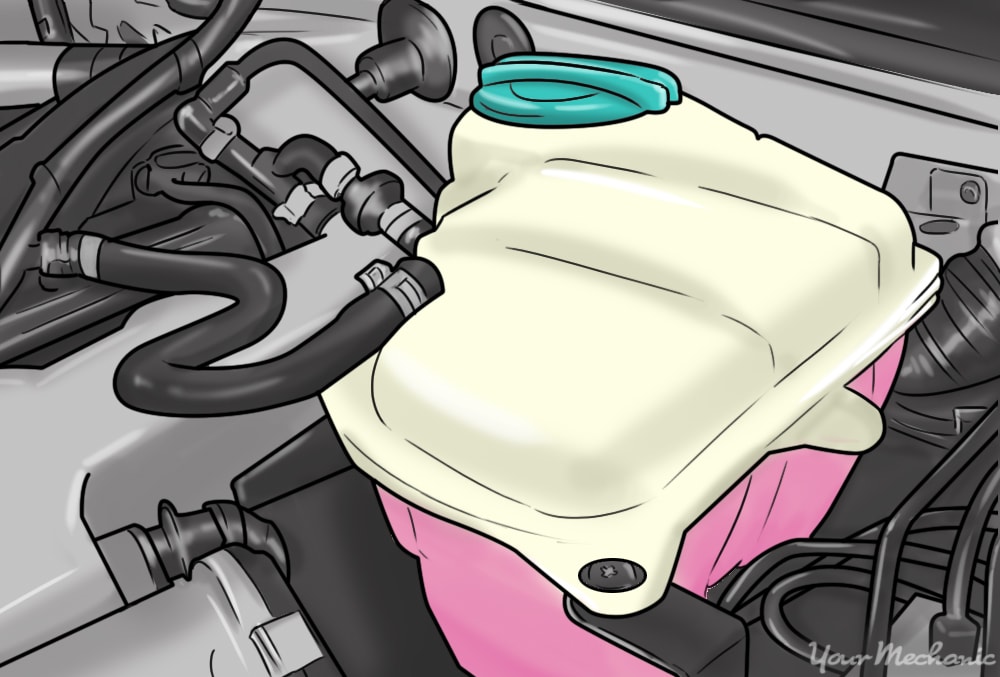

Antifreeze is compound within engine coolant that mixes with water to maintain a level engine temperature, especially in extreme weather conditions. It lowers the freezing temperature of water while also increasing its boiling point. As outside temperatures fluctuate toward extreme heat or cold, coolant is pumped throughout the engine to stabilize its temperature. It also prevents corrosion when kept at ideal levels in your car’s reservoir.
You should check your antifreeze levels at least twice a year, right before the cold and warm seasons, as well as when your vehicle owner’s manual prescribes it. However, even if levels in the coolant tank remain constant, it may need to be changed. Antifreeze can grow acidic over time and actually contribute to corrosion, damaging other parts of your car’s cooling system.
Antifreeze mixes with water, but also contains chemicals like ethylene glycol, propylene glycol, and methanol. Ingesting a small amount is poisonous to humans and animals — pets are particularly attracted to its smell. To safely dispose of old or used antifreeze, keep these rules in mind:
Do not pour your waste antifreeze down the drain.
Animals may still have access to where the liquid flows through a storm drain and drink it because it smells and tastes sweet. It also should not be put in a septic system.
Antifreeze contains glycol, which is toxic to humans and animals in certain doses. The two types of antifreeze are:
Ethylene Glycol Antifreeze: Ethylene glycol is a toxic material associated with birth defects, reproductive damage, or even death if ingested. It needs to be handled carefully, as its sweet odor and flavor make it appealing to pets and small children.
Propylene Glycol Antifreeze: Significantly less toxic than ethylene glycol, propylene glycol antifreeze is still harmful if ingested in large quantities. Small, accidental doses are rarely lethal, but it remains recommended that it be kept out of reach of children and pets.
Do not pour your antifreeze outside on the ground.
If you spill outside, follow these 6 steps:
- Put on protective gloves and wear a mask to prevent breathing in the smell.
- Cover the spill in an absorbent material such as baking soda, kitty litter, or sand.
- Cover the materials with paper towels and let it rest for no more than three hours.
- Wipe up the material and paper towels with dry paper towels and throw it all into the trash. Make sure to seal the bag and wash hands thoroughly.
- Wash the area with soap and water. Flush any remaining stains away with more water.
- Let the wet spot air dry as much as possible or layer it with newspaper or paper towels.
Take your old, used, or tainted antifreeze to a local recycling center, service station, or auto parts shop.
Though there are no EPA regulations, different service shops may be willing to accept, treat, and fully dispose of antifreeze, motor oil, and other used oils. After finding a dumping location, adhere to these 3 recommendations for proper disposal:
- Make sure tainted and merely old antifreeze are separated and stored separately. They require different disposal treatments — tainted antifreeze may contain heavy metals and is considered hazardous waste, so only that kind of facility will take it.
- Drive the substance to the appropriate disposal facility or hire a commercial waste hauler to pick up the antifreeze for you.
- Some locations will have coolant recycling machines that remove glycol from the old coolant and, with an additive, can make it reusable. However, this process requires the antifreeze to be untainted with oils or other materials, otherwise, it will not work.



